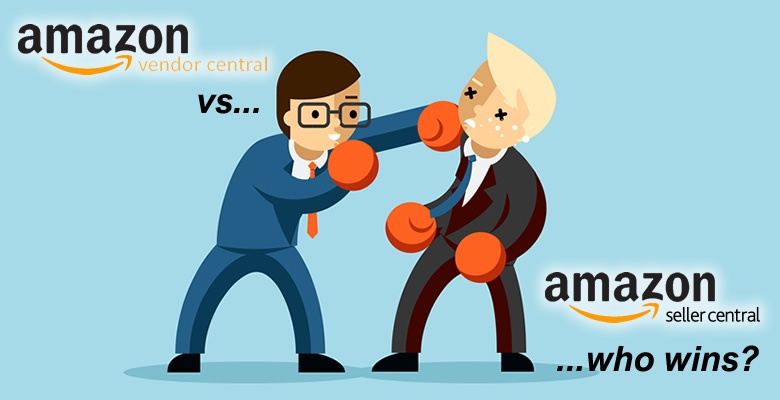What you need to know about Amazon’s Seller and Vendor platforms, and how to choose the right one for your business.
The Amazon marketplace is as vast and cutthroat as the Amazon jungle itself–with over 2 million sellers on the platform globally, selling over 2 billion items per year, it’s easy to get confused by all of the different terms, acronyms, programs, and requirements, especially when you’re just starting out.
Yet whilst it may seem overwhelming, with 300 million active users, the Amazon Marketplace is the opportune place for many smart sellers to find success.
There’s no doubting the opportunity, yet to mitigate risk and maximise your chances of success, there are some critical things you need to know before you start.
As a seller on Amazon, the first and one of the most importants things to understand is the difference between selling on Amazon (‘Merchant Seller’, ‘3P’, or ‘Marketplace Seller’) and selling to Amazon (‘Vendor’).
Having a good understanding of these differences will then help you determine which platform (or which combination of both) will best serve your business and help drive maximum sales and profit.
It is crucial to make this decision before you launch, as whether you are directing sales to a mass volume of prospective customers, or to a single customer in Amazon, will significantly influence your entire Amazon strategy and operation.
To help you navigate this decision, we’ve outlined the key differences between, and pros and cons of starting your Amazon journey on Amazon’s Seller Central Platform, or their Vendor Central Platform.
What is a Sellar Central Platform?
Entering Amazon’s Seller Central platform as a ‘Seller’ is similar to setting up an account and selling products on eBay. When you are a Seller you own all of your inventory and are directly responsible for managing and executing the end-to-end fulfillment of all purchases (i.e. storing, packaging, distributing, etc). For most Amazon Sellers, the cost of this typically ranges from 12-15% of the total purchase price.
As a Seller, you are also solely responsible for creating your account, uploading all content and images, optimising your account for marketing purposes, and consistently managing all shipping, returns, and customer service.
What is a Vendor Central Platform?
Vendor Central is an ‘Invite Only’ service offered by Amazon.
Entering Amazon’s Vendor Central platform means you will sell directly to Amazon, who then on-sell your products to customers. Thus, instead of selling to shoppers as a merchant, you are selling to Amazon as a distributor in bulk.
There are a few ways businesses can have an invitation extended to them.
Every category on Amazon has buyer reps that are responsible for inviting sellers to the Amazon Vendor program, and make the invitations based on whether they believe a product would sell well for Amazon.
Thus, most well-recognised brands will likely receive an invitation, as well as top sellers in the Amazon Marketplace.For smaller businesses and those just starting out, Amazon buyers are regularly at trade shows looking for new products that they believe could do well, presenting a great opportunity to meet buyers and pitch your products.
Amazon has also just introduced a hybrid platform to help smaller companies get noticed–Vendor Express. If you think you have a great product, you simply need to send a batch to Amazon, who will then test it live on Amazon.com. If your product sells and proves to be popular and in demand, you may gain access to Amazon’s Vendor Platform.
Being a part of Amazon’s Vendor Central system grants you access to premium and best-practice content, however you have significantly less control over everything–from the way your products are marketed, to the price your products are sold and how they are distributed to customers.
|
Pros |
Cons |
|
|
Seller Central Platform |
|
|
|
Vendor Central Platform |
|
|
How to pick the best platform for your business.
Both platforms offer advantages and disadvantages to businesses looking to sell products on Amazon.
If you’re a new business entering the market, starting out on the Sellar Central Platform will give you the time to perfect your craft, and help you get a sense of whether Amazon’s Vendor Program may help or hinder your cause.
Keep in mind that a combination of the two "centrals" maybe the best option if you have bulk product and a deep understanding of your preferred marketplace, and want to keep limited control and move a lot of product. This is the hybrid platform involving both accounts and could be the best option for a seller looking to have Amazon's fulfilment and shipping assistance with your ideas over how to optimize the markets e-retail storefront.
In essence, the key when starting out is to not bite off more than you can chew–start with a few products, test the waters, learn the ropes, and experiment with various strategies and initiatives in order to find your perfect mix before exporting all of your eligible products to Amazon.



